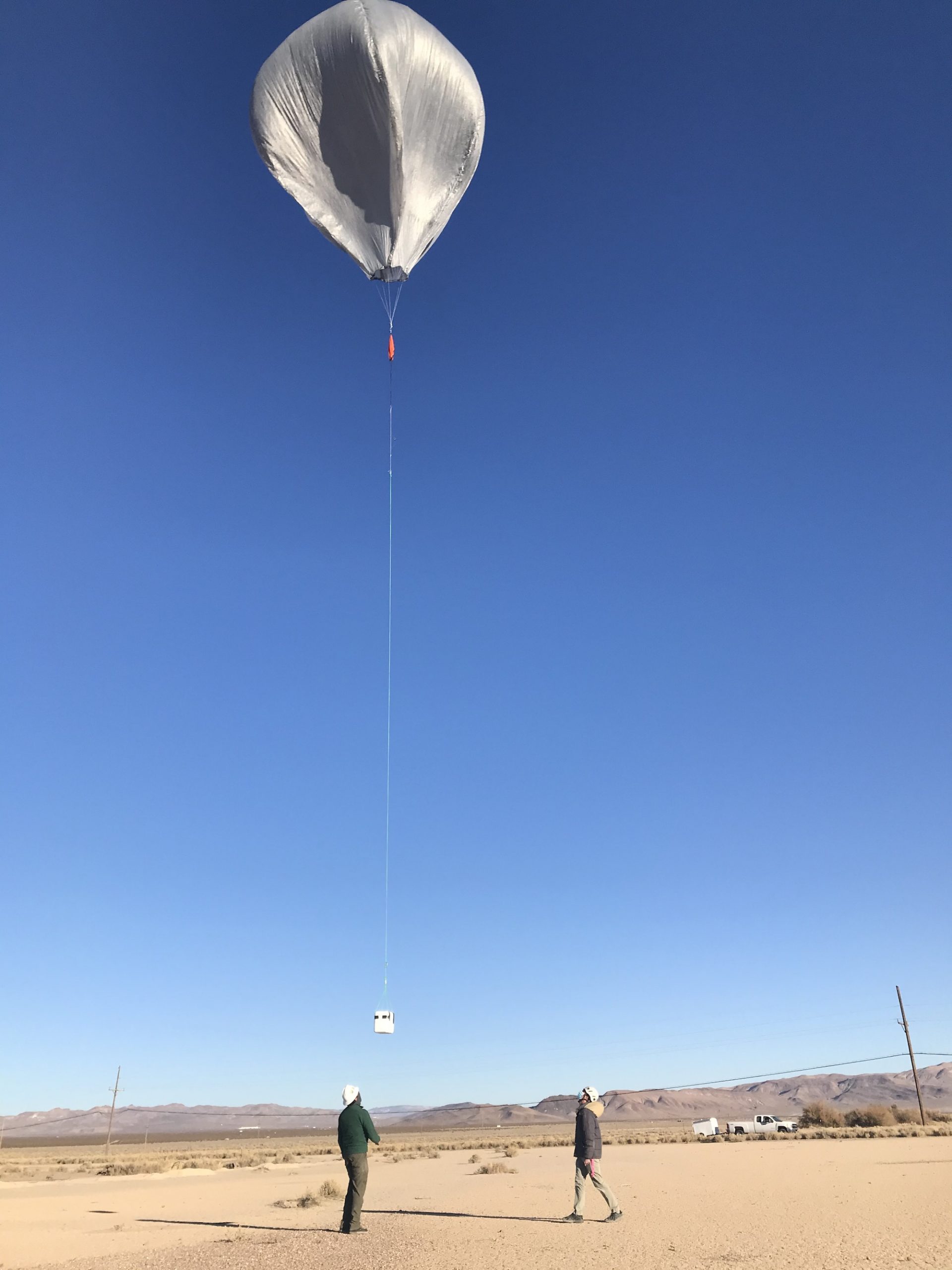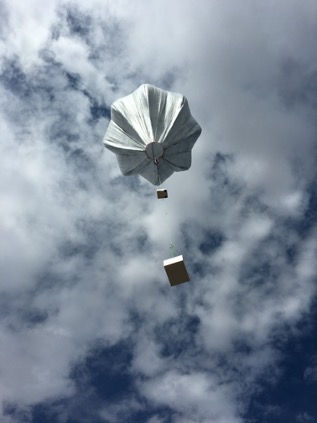Balloon-mounted sensors can detect clearer sound waves from explosions, volcanic eruptions and earthquakes than the commonly used ground-based sensors.
By Elisabeth Nadin, Ph.D., University of Alaska Fairbanks
Citation: Nadin, E., 2022, Testing the limits of airborne acoustic detection, Temblor, http://doi.org/10.32858/temblor.253
Our planet constantly makes noise. From man-made explosions to the constant motion of the ocean, these noises travel as waves in all directions. It turns out that high-altitude balloons — those shimmery silver orbs that probe the atmosphere — can pick up acoustic waves from this commotion. Emerging research presented today at the Seismological Society of America annual meeting shows just how far away the waves can be detected in the air. The results hold promise for distant surveying of land and ocean activity on our planet, as well as on other planets with inhospitable surfaces.

All acoustic waves are pressure waves, which trigger oscillations as the pressure front moves through solid, liquid, or gas. Sound waves are a particular kind of acoustic wave that people can hear; they fall in the range of 20–20,000 hertz (Hz) because that’s how many waves pass a fixed point in a second. But there’s a lot of signal that travels below that frequency. Known as infrasound, low-frequency acoustic waves have proven critical in studying Earth-surface phenomena from afar. Volcanoes, earthquakes, and even ocean waves emit infrasound waves, which are recorded with ground-based sensors.
Although still in the developmental stage, balloon-mounted sensors are proving to be more sensitive to explosions than ground-based sensors. Once an acoustic wave leaves the site of the explosion, it is garbled by the topography it encounters along its path. There is no such encumbrance in the air. The balloons float passively on the wind rather than being driven by an engine, which reduces background noise. “We can record things farther away and more clearly,” says Daniel Bowman, Principal Scientist at Sandia National Laboratories, and lead author on the study. “That allows us to listen for things we might ordinarily miss, like earthquakes and the series of experiments in this study.”

To test the sensor’s capabilities, Bowman and his colleagues flew it aboard a balloon above a series of subterranean chemical explosions at the Nevada National Security Site. At 1.25 miles (21 kilometers) above and 35 miles (56 kilometers) away from the test site, the balloon record was faint. Still, the shape of the waves it recorded matched the signal recorded at a station on the ground only a third of a mile (500 meters) away. And at a sensor 28 miles (45 kilometers) away on the ground, the signal was absent.
“This technology provides a nice complement to networks of ground-based sensors, and shows promise for helping us to understand acoustic wave generation and propagation,” says David Fee, a research professor with the Geophysical Institute at University of Alaska Fairbanks, who specializes in infrasound detection.
Exploring other worlds
Bowman says he is excited about the possibilities for balloon-based detectors. “The body of work that we’re building has implications for detecting volcanic and seismic activity on other worlds.” The surface of Venus is so hot that past landers have survived only a few hours. Though different planets have different atmospheric characteristics, Bowman says this test gives him great optimism for its capabilities.
“Every time we fly it feels like we see something new,” says Bowman.
The field of airborne acoustic wave detection is in its infancy; it was picked up again in 2014 after a 50-year hiatus. Balloons currently have a limited flight time, but Bowman says he sees a new direction in flights of months or years, absorbing a wealth of information that can help us monitor all surface motion, from ash clouds to ocean waves.
References
Bowman, D. C. (2021). Airborne infrasound makes a splash. Geophysical Research Letters, 48(23), e2021GL096326.
- Earthquake science illuminates landslide behavior - June 13, 2025
- Destruction and Transformation: Lessons learned from the 2015 Gorkha, Nepal, earthquake - April 25, 2025
- Knock, knock, knocking on your door – the Julian earthquake in southern California issues reminder to be prepared - April 24, 2025
